![A transport of Jewish prisoners marches through the snow from the Bauschovitz train station to Theresienstadt. [LCID: 69720]](https://encyclopedia.ushmm.org/images/large/781755a6-1ba5-4d8e-8b2b-9f25bdf3687f.jpg)
Browse an alphabetical list of photographs. These historical images portray people, places, and events before, during, and after World War II and the Holocaust.
<< Previous | Displaying results 1-20 of 20 for "Photo" | Next >>
United Nations personnel vaccinate an 11-year-old concentration camp survivor who was a victim of medical experiments at the Auschwitz camp. Photograph taken in the Bergen-Belsen displaced persons camp, Germany, May 1946.
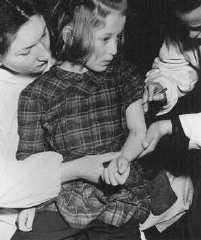
A 13-year-old orphan, a survivor of the Mauthausen concentration camp. Photograph taking following liberation of the camp. Austria, May 1945.
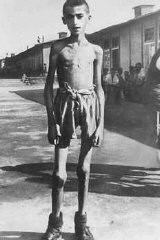
Detail of the 14th Street facade of the United States Holocaust Memorial Museum. Washington, DC, April 2003.
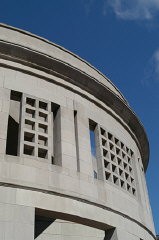
A 1915 portrait of Willem Arondeus. During World War II, Arondeus, a gay member of the Dutch resistance, participated in an attack on the Amsterdam Population Registry offices. His group set fire to several thousand files in an attempt to destroy government records of Jews and others sought by the Nazis. Soon after the attack, his unit was betrayed. The Nazis arrested and executed Arondeus in 1943. Blaricum, the Netherlands, 1915.
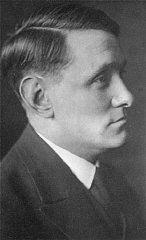
Street scene in the Jewish quarter of Paris before World War II and the Holocaust. Paris, France, 1933–39.
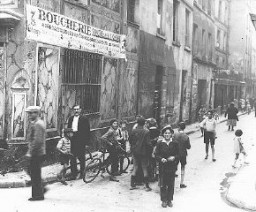
Abraham and his family fled from Berlin to Amsterdam in October 1938. They found refuge in the Netherlands until January 28, 1943, when all the members of the Muhlbaum family, except Abraham, were deported to Westerbork. Abraham escaped over the rooftops during the round-up. He gradually established a new life as a member of a Dutch resistance group that included Joop Westerweel.In 1944, Abraham was arrested as a member of the resistance (his Jewish identity remained hidden). He was held in…
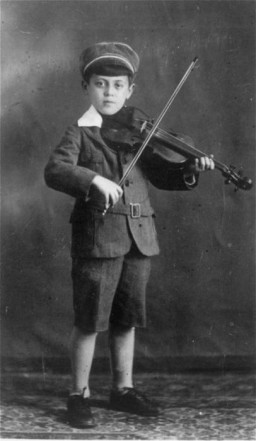
Nazi propaganda constantly reinforced the notion that Hitler was the embodiment of the national will. Here, a determined looking Hitler in military dress stands with clenched fist, poised for action above the adoring crowd. The text on the poster says "Yes! Leader, We Follow You!" (Ja! Führer wir folgen Dir!)This poster, designed for a 1934 public referendum on uniting the posts of German chancellor and president, conveys unanimous popular support for Hitler.
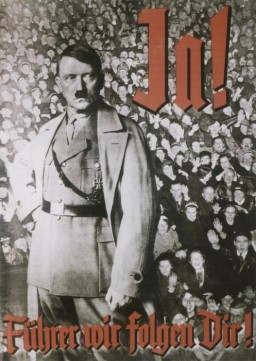
Close-up studio portrait of a young Jewish girl named Anna Glinberg, who was later killed during the mass execution at Babi Yar.
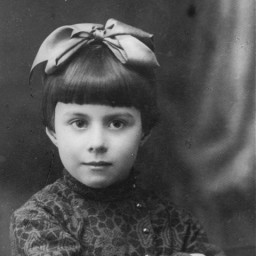
1936 portrait of two-year-old Mania Halef, a Jewish child, who was later killed during the mass execution at Babi Yar.
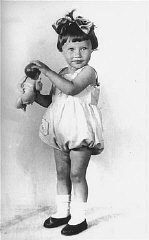
1936 poster: "All of Germany Listens to the Führer with the People's Radio." The poster depicts a crowd surrounding a radio. The radio looms large, symbolizing the mass appeal and broad audience for Nazi broadcasts. Bundesarchiv Koblenz (Plak003-022-025)

Prewar studio portrait in Sighet of Jewish siblings Suri and Ari Deutsch, both of whom died in the Holocaust. This photograph comes from the album of their cousin, Rosalia Dratler Roiter. Rosalia was deported to and died at Auschwitz. Sighet, Romania, 1937.
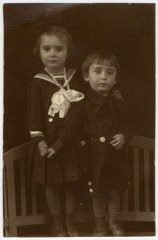
1943 portrait of Edgar Krasa drawn by Leo Haas in Theresienstadt. Haas (1901-1983) was a Czech Jewish artist who, while imprisoned in Nisko and Theresienstadt during World War II, painted portraits and produced a large volume of drawings documenting the daily life of the prisoners.
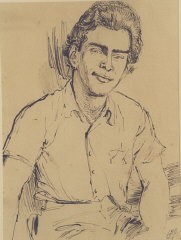
1943 still life of a violin and sheet of music behind prison bars by Bedrich Fritta (1909–1945). Fritta was a Czech Jewish artist who created drawings and paintings depicting conditions in the Theresienstadt camp-ghetto. He was deported to Auschwitz in October 1944; he died there a week after his arrival.
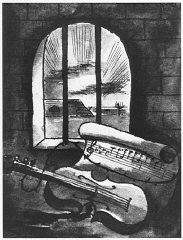
1943 watercolor landscape of Theresienstadt painted by Otto Samisch. Despite the terrible living conditions and the constant threat of deportation, Theresienstadt had a highly developed cultural life.
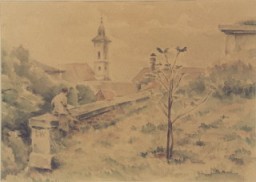
This poster from 1945 shows an embattled German family proclaiming, "Frontline City Frankfurt will be held!" A Frontstadt was a city Hitler declared must be defended against Allied attack at all costs. In the final months of the war, propaganda efforts were directed at rallying the populace for a final defense of the country.
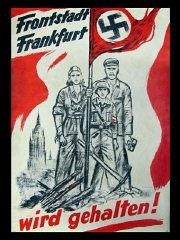
Miles Lerman (who married Regina's sister Krysia), Lodz, Poland, 1945.
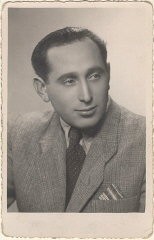
Photograph of Regina (Renia) taken on June 2, 1945, in Lodz, Poland.
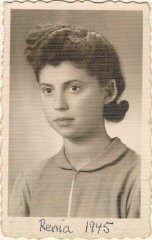
1945 portrait of Eta Wrobel who was born on December 28, 1918, in Lokov, Poland. During the Holocaust, Eta helped organize an exclusively Jewish partisan unit of close to eighty people. She was the only child in her family of ten to survive.
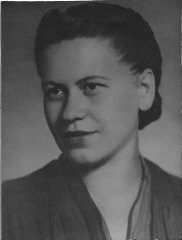
A Czech postage stamp issued in 1957, commemorating the fifteenth anniversary of the destruction of Lidice.
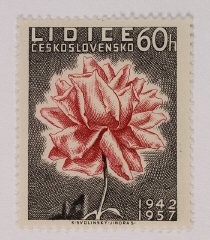
Members of the United States Holocaust Memorial Council pose with President George Bush (third from right) on the occasion of the 1989 Days of Remembrance. Benjamin Meed is fourth from the right. Washington, DC, 1989.Learn more about Days of Remembrance.
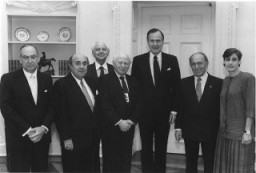
We would like to thank Crown Family Philanthropies, Abe and Ida Cooper Foundation, the Claims Conference, EVZ, and BMF for supporting the ongoing work to create content and resources for the Holocaust Encyclopedia. View the list of donor acknowledgement.